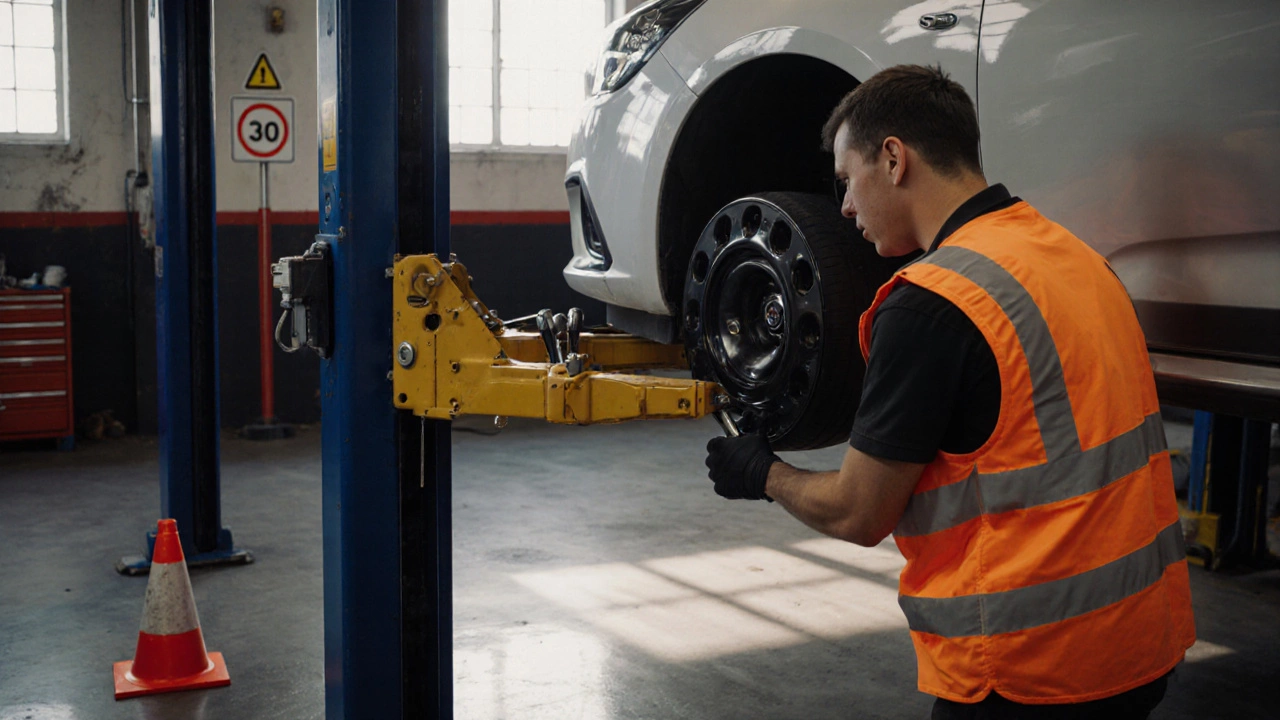Daily Driving Safety – Easy Tips for Safer Everyday Rides
Whether you commute to work or run errands on the weekend, a few quick habits can make every drive safer. You don’t need a garage full of tools – just a little attention to the bits that matter most. Below are the most useful checks you can do in five minutes or less.
Check Your Wheels and Tires
Start with the wheels. Uneven tire wear is a red flag that something’s off with alignment, pressure, or even the spacers you might have added. Look for cupping, bald spots, or excessive scuffing on the sidewalls. If you use wheel spacers, make sure they’re the right thickness and are hub‑centric – that means the hole lines up with the hub bolt circle. Mis‑aligned spacers can change the scrub radius and wear your tires faster.
Next, press the tire with your thumb. A soft spot could mean a slow leak or a damaged sidewall. Keep the pressure at the vehicle’s recommended level (usually found on the driver’s door jamb). Under‑inflated tires waste fuel, over‑inflated ones reduce grip and can blow out.
Stay Smart with Lights, Tint, and Accessories
Headlights and taillights don’t need a full replacement every year, but they do need a quick check. Make sure the lenses are clean, the bulbs are bright, and the wiring is tight. If you’ve swapped to LED bulbs in older housings, confirm they’re road‑legal in your state – some LEDs create glare that can be unsafe.
Window tint is another common upgrade. While a darker tint looks cool and blocks UV, too dark a film can be illegal and reduce visibility at night. Aim for a tint level that stays within local regulations (often 35% VLT for front side windows) and watch for fading, especially if you park in direct sun for long periods.
Accessories like roof racks, bike carriers, or even a new spoiler add style but also change aerodynamics. Double‑check that bolts are torqued to the manufacturer’s spec and that nothing rattles when you drive. A loose rack can damage the roof or cause a dangerous wobble.
Don’t forget the basics inside the car. Adjust your seat so you can reach the pedals comfortably, and set the mirrors before you start moving. A quick glance at the dashboard for warning lights can catch engine or brake issues before they become emergencies.
After any modification – whether you’ve installed spacers, a custom exhaust, or a body kit – give the car a short “post‑install” inspection. Look for leaks, abnormal noises, or vibration. Tighten any nuts that feel loose after a few miles, and re‑check wheel alignment if the steering feels off.
Keeping your warranty intact is easier than you think. Avoid actions that void coverage, such as skipping regular oil changes or using non‑approved parts. When you’re uncertain, a quick call to the dealer can save you from costly repairs later.
Finally, make a habit of a weekly walk‑around. Spotting a nail in a tire, a cracked bumper, or a loose bolt early prevents bigger problems down the road. It only takes a minute, and it keeps you and your car safer.
By integrating these quick checks into your routine, you’ll drive with confidence, protect your investment, and avoid many common safety pitfalls. Stay alert, stay simple, and enjoy the road.

Wheel Spacers: Are They Safe for Everyday Driving?
A practical guide on wheel spacers, covering safety, installation steps, legal limits, and alternatives for daily drivers.